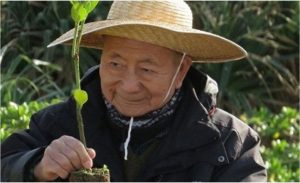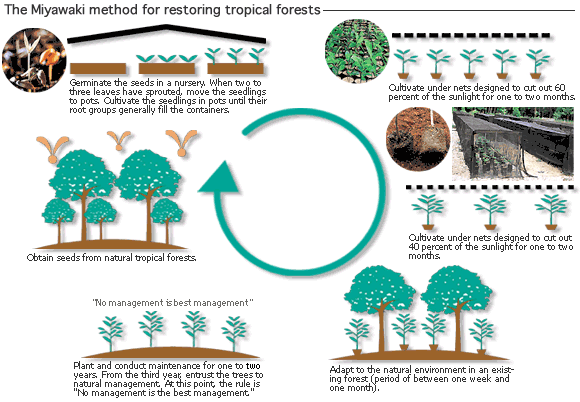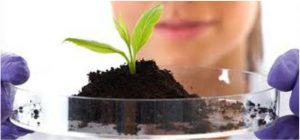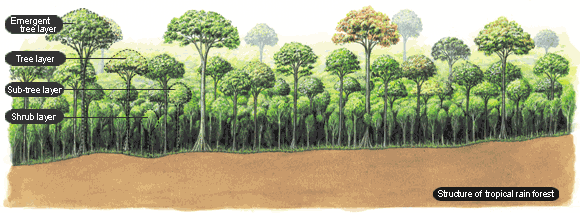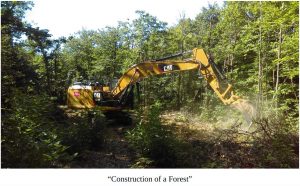by-
Naman Mathur – CEV Member
Mechanical Engineering (NIT Surat)
Let us start this blog with a little off-topic.
Have you seen the growing trend of JCB Construction…?
Have you ever thought, why such a hype for something which is pretty usual to find?
It’s just a machine. Memes on JCB Construction does nothing but exposes the dark side of our earth, i.e. we have affected our environment a lot with the introduction to The Concrete World. Cities and nations tend to wear these new skyscrapers and structures as a badge of honour of development. We people too acknowledge cities like Singapore, New York and Mumbai as ‘Very Developed Cities’ giving them a misconception that development links only with giant concrete construction. But there needs to be a change in thinking which associate development with Construction of Forest.
‘Construction of Forest’ seems like a foolish concept as we caught the wrong feeling of the definition of a forest. People think the forest is an isolated piece of land where animals live together. But I believe the wood can be an integral part of urban existence. For me, a forest is a place so dense with trees that you can’t just walk into it. It doesn’t matter how big or small they are. It can be a big spread of land with acres and acres of trees, or it can be just a piece of land in your backyard. Size doesn’t matter in the functioning of the forest. Most of the world we live in today was a forest. This was, of course, before the human intervention. We built up our cities on those forests, forgetting that this motherland belongs us equally as the other 8.4 million species on the planet. We constructed a concrete world on our forests, and we all know its consequences. Global Warming, Climate Change, Depletion in groundwater, Soil Erosion and what not!
Conferences and discussions are held often in understanding the issue of Global Warming, and Climate Changes with the experts stating the fate human world will have to face if we don’t do something and avert this problem. But one of the most crucial pressure point of this problem, that even the experts fail to reflect on is the sense of self-motivation towards a better environment. With the growing number of events regarding environmental awareness and social awareness, a considerable amount of people has got the gist of the issue. But a huge percentage of people fail to have that feeling to work for a better environment. We, humans, are born a little selfish. Thus, we are very inactive to find a solution to environmental issues.
So I think to avert the wrath of nature we need to think out of the box towards a little more conventional thought process. Just like our ancestors built a concrete world on our beautiful nature land, we now need to construct natural world back on this concrete world. Miyawaki Method of Afforestation is one such measure which if implemented and maintained adequately can be the stepping stone to a better environment. In this method, we are constructing forests on the concrete world. It also promotes the idea of the Natural Development of a Place.
ORIGIN OF MIYAWAKI METHOD
Miyawaki Forest was pioneered by Japanese Botanist Akira Miyawaki, who is an active world-renowned specialist working towards the restoration of the natural vegetation on degraded lands. Miyawaki showed that natural Japanese temperate forest should be mainly composed of deciduous trees – while in practice, conifers often dominate. Deciduous trees are still present around tombs and temples, where they get protected from exploitation for religious and cultural reasons.
As his research progressed, he found that forest vegetation of Japan has declined due to the introduction of alien species by man. He immediately felt the need to take charge and stop this human interference into nature.
Difference between Miyawaki Method and Conventional Method of Afforestation
Consider Miyawaki Method as a more advanced version of any conventional method of the plantation. Miyawaki Method takes into account features like nutrients in the land, native plantation of the area and other scientific backgrounds of the site. Conventional Method ensures just one tree per square foot opposing to thirty trees per square foot. Limited species are available for the old method while 25-50 species are available for multi plantation method of Miyawaki Method. Miyawaki Forests, also known as Multi-Layer Forest, are self-sufficient forests after 3 -4 years while extensive maintenance is necessary for growth in the usual way of the plantation. So clearly Miyawaki Method, though a little complex can be very useful and better than the conventional method.
Process of Miyawaki Method of Afforestation
This article shares the primary impressions to create small forests in small urban spaces, as little as 30 square feet. If followed effectively, these steps can ensure you of creating a natural, wild, maintenance-free, native forests.
STEP 1. Soil Analysis and Quantify Biomass
Soil Analysis helps in getting information about properties like water holding capacity, water infiltration, root perforation capacity, nutrient retention and credibility. Also check if the texture is sandy, loamy or clayey.
Requirements for the soil
- Nutrients are essential in the ground for the healthy growth of the forest. Preferably organic fertilisers like cow manure and vermicompost. Cow Manure is found easily in dairy farms, but Vermicompost is provided small amounts of nutrients over a long period.
- This method of afforestation requires a considerable amount of water. So it is essential to maximise the utilisation of water. So we use water retaining materials like coco-peat or dry sugarcane stalk.
- Proper air is essential for the roots to grow as they’re the base of the trees. So perforation is a requirement in the Miyawaki Method of Afforestation. Rice Husk, Wheat Husk, etc. can be used as perforator materials.
- At the age of 6-8 months, when the plants are young, direct sunlight can make the soil dry and make conditions difficult for the young sample. So Mulch is used to insulate and protect the soil. Options include rice straw or corn stalk.
STEP-2 Selection of Tree Species
- Plants are area and climate-specific in nature. So in this method, we need first to study the native plant species of the area given.
- For this method, the forest must contain trees of different heights, age and nutrients. Ideal height varies from 50 to 80 cm.
- Major Species: 5 major native species should be found that are commonly found in the area which will constitute 50-60 per cent of the forest.
- Supporting Species: Other common species of the area will constitute 25-40 per cent, and other minor species will make up the rest.
STEP-3 Forest Designing
- Proper planning is essential to increase the efficiency of several growing trees and to maximise the use of resources.
- A master plan is designed to identify the exact area for afforestation to get an idea of the materials required for the method.
- Also, to ensure that we don’t wastewater in the process, we need to plan water usage as well based on daily water access, backed by borewells and tanks.
- If the project is big enough, we also need to identify spaces for materials, sapling, equipment, etc.
STEP-4 Area Preparation
- The site should be effectively inspected to ensure the feasibility of the project. Proper fencing should be constructed to make sure that no cattle can damage the growth of the forest.
- Weeds and debris should be removed and disposed of effectively. Ensure pulled out weeds are disposed of away of the site, else they may grow.
- Facility for watering the plants should be installed. The requirement of water is around 5 litres/sq metre per day.
- The site should get proper sunlight for minimum 8-9 hours a day for better growth of trees.
- The slope of the land should be such that the water and nutrients are spread across evenly.
- The area can be divided into parts, if the site is big, for proper monitoring and maintenance of the forest.
STEP-5 Tree Plantation
- This might be the most important step of the Miyawaki Method of Afforest.
- First, dig the soil up to 1 m depth on the land. Then again put the half of the dug soil back into the pit uniformly. This is to increase the perforations in the soil, and it loosens the soil too.
- Also, mix the biomass with the soil to increase the nutrient count in the land.
- In Miyawaki Method all the samplings should be planted together on the mound, rather than the conventional method of digging individual pits for the sampling.
- To ensure the forest grows in three different layers- Shrub, Sub Tree and canopy, we need to plant the saplings in a specific manner.
- Try not to place two similar trees next to each other and also ensure not to form any specific pattern while planting plants. Remember, the goal is to form a random plantation to get a dense group of trees.
- Mixing materials like perforator and water retainers should be well mixed for each mound.
- After the saplings are planted, proper mulch should be evenly laid out on the soil in a 6-8 inch layer. Mulch needs to be tied down with the use of bamboo ropes so that they don’t fly around.
- As discussed earlier, watering should be performed effectively with about 5 litres per square metre.
STEP-6 Maintenance and Monitoring for the Forest
- Plants are very sensitive at a young age. So the samplings should be monitored at least for the first 8-12 months, once every 1-2 months. If any changes are required in the early stages, improvisation is inevitable.
- Watering every day is the base of the method. If there are some issues in the watering process, the whole project can be jeopardised.
- It is very important to keep the forest weed-free for the first 2-3 years, and then it is self-sufficient to keep the weeds away. Maintain the forests clean and free from plastic, paper, etc. as we are growing a natural forest.
- Also, one important step at Miyawaki Method of Afforestation is that there should be absolutely no use of chemical pesticides and fertilisers to kill the pests. Leave the pests untouched. The forests will slowly build its own mechanism to keep itself healthy.
- Never remove the organic fallen leaves on the land as they can be useful to kill the soil microbes and also increase the nutrient level of the forest land. Never cut the forest in any manner.
Conclusion
Miyawaki Methodology has been hugely successful, with over 17 million trees planted in 1700 locations across the globe. Such forests are multi-layered forests and mimic the densest parts of native undisturbed forests. In comparison to the conventional woods, Miyawaki forest can grow ten times faster, be 30 times denser and 100 times more bio-diverse.
‘Construction of a Forest’ doesn’t seem too vague now after all. If Miyawaki Methodology executed effectively, we could grow a forest in our backyard or any other suitable land in this urban concrete world to take a step closer to a better world.

